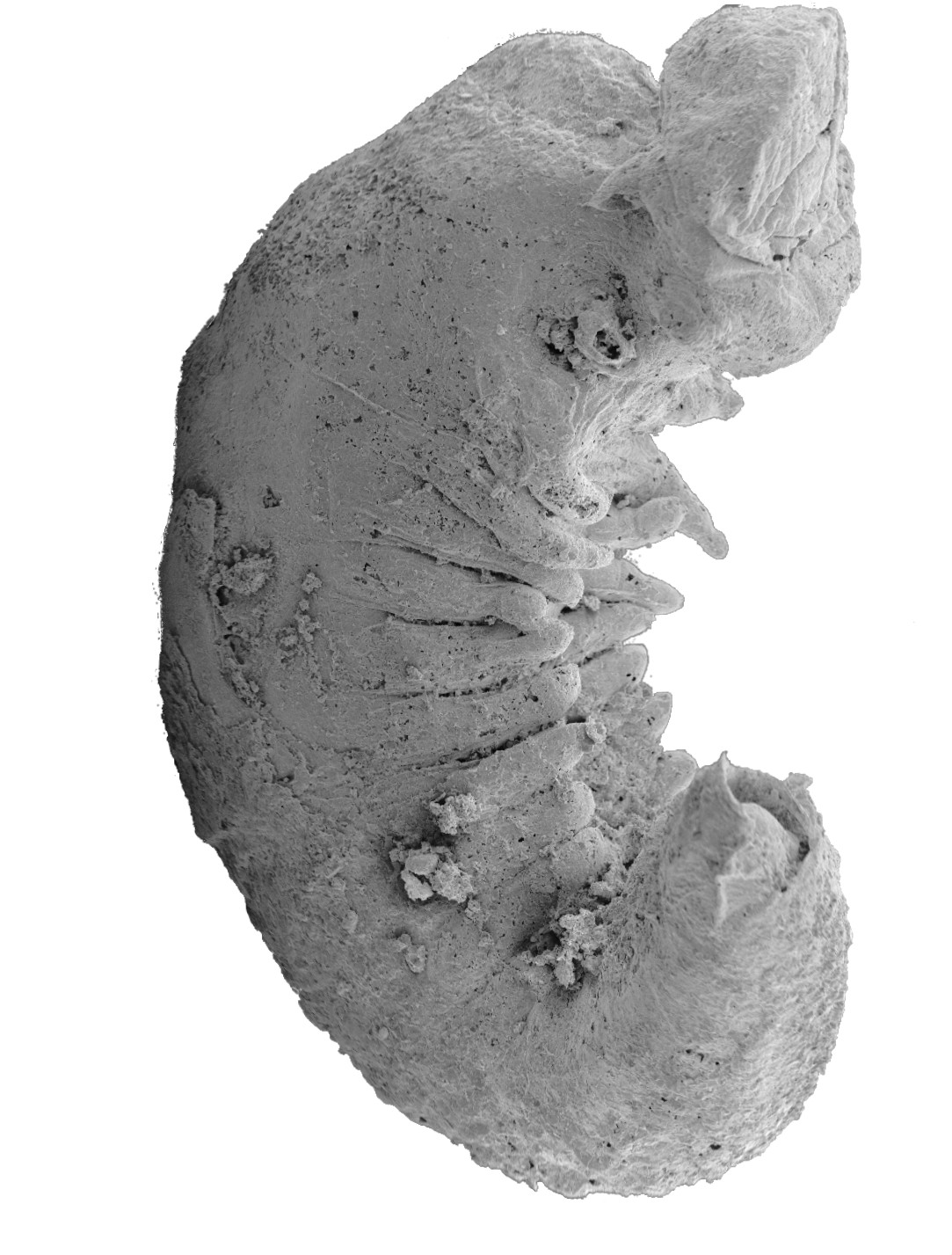520 Million-Year-Old Larva Fossil Reveals How Insects Evolved
Posted on Categories Discover Magazine

Sometimes daydreams turn into reality. As an undergrad, Martin Smith remembers attending a lecture that stuck with him. The talk touched on the difficulty of showing how ancient wormlike creatures evolved into more complex organisms with arms and legs — like insects, spiders, crabs, and centipedes.
Demonstrating that had so far proved daunting, since no Cambrian period larval fossil contained the details necessary to make any evolutionary inferences. Smith remembers thinking, “If they ever find the right fossil larva from the Cambrian, all this will fall into place!”
With the analysis of a Youti yuanshi larva, Smith, now a professor at Durham University, is pinching himself. “I never really thought this would be possible, less still that I’d be able to work on it,” says Smith.
A Well-Preserved Larva Fossil
In general, Cambrian fossils lack the necessary detail to really examine their evolutionary nature. But through good fortune, the fossil the Durham group discovered was so well preserved its internal organs could be detected with imaging, they report in Nature.
Smith suspects that the recently dead larva fell into phosphorous-rich waters with just the right chemical conditions.
“Of the thousands of other organisms preserved in similar deposits, I don’t think any display the kind of exquisite internal preservation we see here, so we have really struck it lucky — this fossil must have had its own particular story where the stars aligned for nearly immaculate preservation,” Smith says.
Although the larva they examined was smaller than a poppy seed, scanning it with a high-energy imaging technique at the Diamond Light Source in Oxfordshire, England, yielded amazing detail, including 3D pictures of the organism’s brain, digestive glands, circulatory system, and nerves to the larva’s legs and eyes.
Read More: What Are Fossils and Where Are They Found the Most?
The Evolutionary Tree
Shining a light on the inner workings of this euarthropod fossil showed that, although it looked primitive from the outside, its nervous system appeared more similar to that of an arthropod — which is one step up the evolutionary ladder above the euarthropod.
“What the fossil shows is that this sophisticated internal anatomy was starting to develop in organisms that, from the outside, still looked quite simple,” says Smith. “Once we started to make sense of the internal anatomy, we kept being surprised that the features we saw belonged much higher up the evolutionary tree than the position we’d expected for the animal.”
The takeaway from this detailed imaging? Youti was probably much better at processing sight and touch than previously thought. The next question is, will its more sophisticated-than-previously-thought nervous system bump it up the evolutionary tree — closer to an arthropod than a euarthropod?
“We are still a long way from having all the loose ends sewn up,” says Smith.
Read More: A Kaleidoscope of Evolution: The Colorful Cambrian Explosion
Article Sources
Our writers at Discovermagazine.com use peer-reviewed studies and high-quality sources for our articles, and our editors review for scientific accuracy and editorial standards. Review the sources used below for this article:
Before joining Discover Magazine, Paul Smaglik spent over 20 years as a science journalist, specializing in U.S. life science policy and global scientific career issues. He began his career in newspapers, but switched to scientific magazines. His work has appeared in publications including Science News, Science, Nature, and Scientific American.